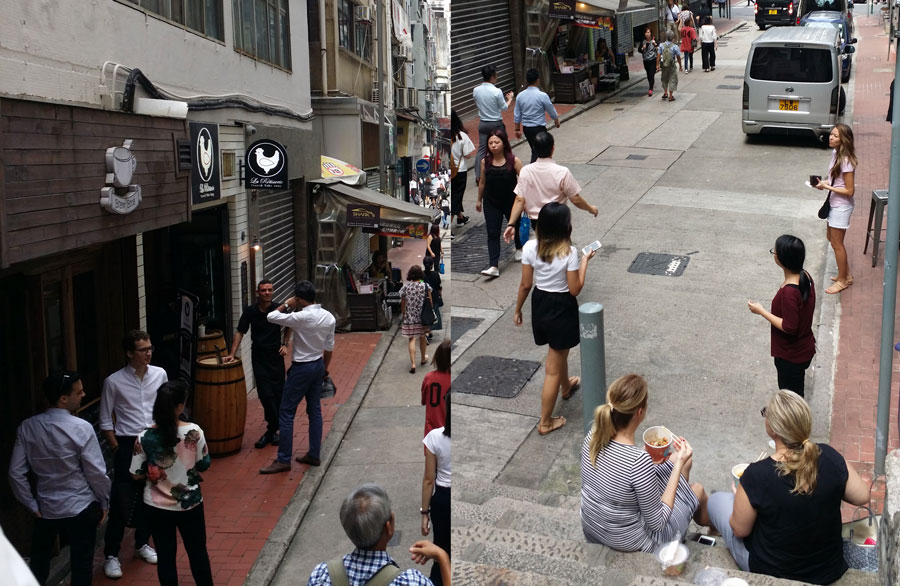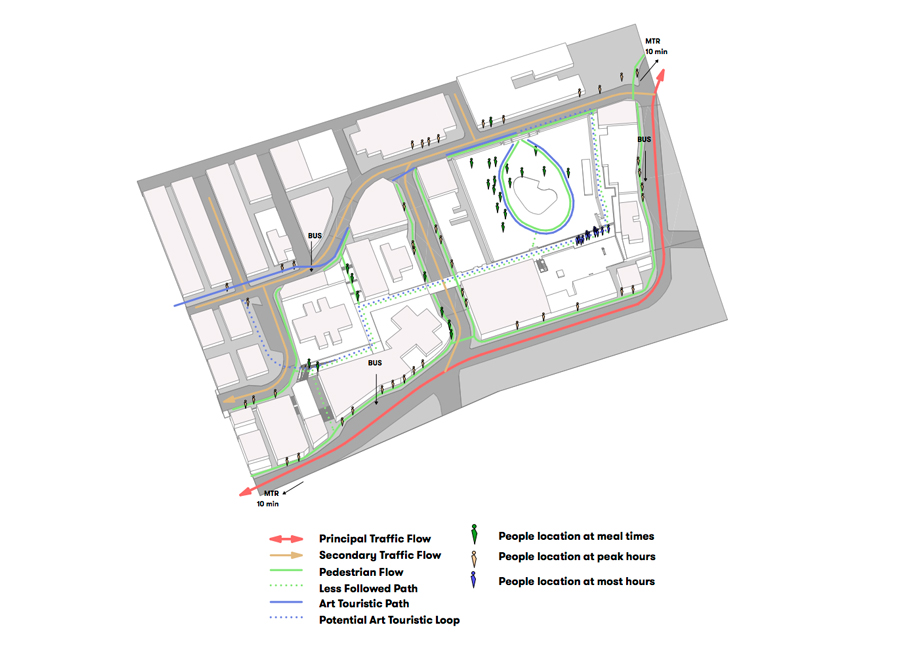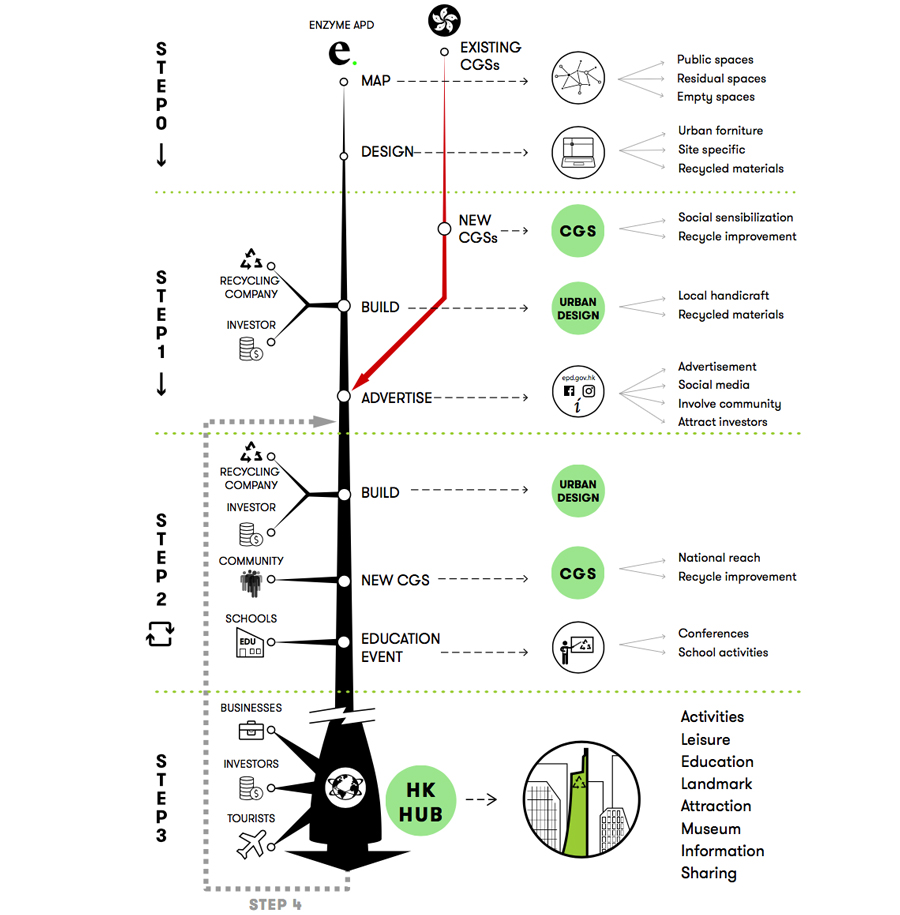Hello everyone,
Sustainability and Community are two of the main challenge we are facing in our time right now. Probably the second one has been a continuous problem in the human history. But Sustainability is a quite new problem that appeared recently in the history of the relationship in between humans and our planet. The bad news is that we need to tackle this new problem as soon as possible or we will create irreversible damage to our planet. As an architecture firm in Enzyme, we have always in mind this two factors when we approach architecture design.
As some of you may know we try to use tools like BIM and Computational Design to give an answer to these problems in our projects. Sometimes it is not easy to implement the bests solutions in a project depending on the requirements from the client. But we are very keen to propose solutions and strategies that can improve and change the way we understand our environment, community and space.

Hong Kong Picture by Joseph Chan. Source unsplash.com
We are based in Hong Kong. Many of you may have never been in this city but it’s worth visiting. Hong Kong has great advantages and disadvantages compare to other international big cities. Is a city of extremes. Something good about Hong Kong is the huge amount of green areas that are surrounding the city. This is a great advantage compared to other important cities in the world. You can access one of the many peaks in the region through a great hike across hills and jungle in a matter of two or three hours. The counterpart is that the city fabric remains very dense and tight, sometimes it can be claustrophobic.
I just came across recently with a video from the South China Morning Post that enlightens the reason why Hong Kong is such a dense city where the price per square meter is the most expensive in the world. This situation in which everyone wants to maximise the profit of every square meter creates a huge harm to the quality of both private and public space in the city. That also worsen the quality of the architecture itself because there is almost no room for creativity and design freedom.

Map of the area of Sheung Wan and Sai Ying Pun
Without digging deep into the figures, we find two big problems in Hong Kong: One is the quality of the space (both public and private) inside the city as we already mentioned. The other big problem is the huge amount of waste that Hong Kong produces. Of course, another problem to arise could be the poor energetic efficiency performance of most of the buildings of the city. We relay in air conditioner eight months a year. I would like to get back to this topic in a further post…
In this article, I want to focus on the Waste Production and the Quality of Public Space in Hong Kong.

Image from the article “Straight to landfill? Why Hong Kong is recycling less of your rubbish” from the South China Morning Post. Click on the link to know more about it.
The Problem of Waste in Hong Kong
In a city like this one where the rhythms of life and work are so extreme seems that nobody has time to have a break even for a proper meal. So take away food is the way to go for most of the people. This is one of the reasons we produce tonnes of plastic waste compared to other cities. Hong Kong doesn’t have a proper infrastructure for recycling and most of the plastic and metal waste is sold to other countries.

Source of information “Monitoring of Solid Waste in Hong Kong – Waste Statistics for 2015”. Click on the link to know more about it.
Recycling in the city from the user perspective is not an easy task either. If you want to recycle your trash you need to bring it yourself to public collecting points spread around the city. But the main problem is that it is not in the mindset of citizens of the Hong Kong to avoid producing waste in the first place or to recycle it afterwards. The separated collecting points spread on the city are very often full of trash that it is mixed because people don’t care about separating it properly. And of course, nobody really cares where all this trash ends up. So the recycling process is already broken from the beginning.
The landfills of Hong Kong are running out of space as this article from the SCMP describes already more two years ago. But the amount of plastic that is dumped into the ocean is also very high. Hong Kong is a busy international harbour and there is not a proper policy of control to avoid the trash and plastic ending up in the water.

Image’s from the article “Plastic paradise: Hong Kong’s packaging problem” from the Hong Kong Free Press. Click on the link to know more about it.
Another big issue is the huge amount of Construction Waste is produced in the city basically because of the way we build is also very inefficient. Could the use of BIM in construction help in this matters? Of course, it could and it will.
Nowadays many countries are promoting policies to avoid plastic waste production in first place and also creating proper mechanisms of recycling the waste once produced. In Hong Kong, the government is starting to implement some strategies of their own. The “Hong Kong Blueprint For Sustainable Use of Resources 2013-2022” outlined the government’s ambitious goal to reduce 40% municipal solid waste (MSW) by 2022.
Another good news in Hong Kong is that the government has a plan to create the CGS – Community Green Stations in every district with the target of enhancing the collection and recycling process but also to promote civic education in the matter to help target the problem from the beginning.
The Government’s actions are crucial in this matter but the community needs to react as well. If the citizens of Hong Kong are not aware and actively involved in these matters there will be no chance to solve the problem. People of Hong Kong, wake up!

Picture taken from a public park in the area of Sheung Wan.
The Problem of Public Space in Hong Kong
As I mentioned before in Hong Kong every developer, owner, buyer and user want to profit the maximum out of every single square meter. What it means is that Hong Kong has the densest pieces of urban fabric on the planet. This produces that the private residence space is minimal and not well designed but also the public space becomes residual areas in between the dense construction.

People eating in a street of Sheung Wan.
The city of Hong Kong offers some nice public areas, parks and sports facilities in the city. These facilities are of course immerse in the dense urban fabric and most of the time are quite small, but at least they are well maintained and they are useful for their purpose. Here I am talking from my experience as a citizen living in Hong Kong Island. But in general, the streets where pedestrian walk has narrow sidewalks, the intersection in between these streets are very common poorly resolved both for pedestrian and traffic and the public space is very often not adapted to the necessities of the users.
Hong Kong has a big culture of street food and there are everywhere a lot of small food shops, coffee places, local food restaurants, etc.., Most of the time the city doesn’t offer proper space to address these activities, and users end up eating seating on crowded stairs, standing in the middle of busy streets or taking your meal in a plastic box back to their office. More waste produced of course.

Pedestrian and Traffic circulation Diagram from an intervention area.
Very often small pedestrian areas such “corners” and “gaps” in between streets are “functionally abandoned” because they are residual spaces result of an aggressive planning. These abandoned spaces have nothing to offer to the city but great potential. These abandoned gaps are sometimes used by the pedestrian in an improvised way in a poor attempt to develop “some activity” on the street. But there is a huge amount of possibilities of how the public spaces in the city of Hong Kong can be improved in order to enjoy the life in the city. Even small spaces can be useful to the city if they are designed and planned with quality and efficiency.
The Opportunity
Enough said already, in our office we have been discussing and researching for a long time these issues of Hong Kong. Regarding the topic of coming up with a sustainable architecture that is more energy efficient we also have been cooking some cool and sustainable proposals for the city that we will share later on…
But we have developed a strategy to Regenerate the Public Spaces in Hong Kong trying to tackle the Waste Production awareness problem at the same time, an Idea that could be the guideline for regenerations all around the globe… we called this initiative Re(generation) Hong Kong.

“An intervention plan to regenerate the daily life spaces in the city. Redesigning the leftover spots by the real user’s needs, mapped by its own community and built with its own recycled resources”
As mentioned above the objective is to develop a “network of interventions” through the city to improve and redevelop the urban public spaces for pedestrians using an environmentally friendly approach and method in order to raise awareness to the users about the excess of waste that we produce.
Diagrams showing the speed process of this “face lifting” interventions all over Hong Kong.
The Plan
HK Regeneration is based in a Circular engagement from citizens to government, and a step by step strategy with multiple benefits not only for the real user’s but as well as, for the government and private investors willing to gain while sharing the same minded vision.

Someone’s waste is someone else’s resource.
This concept is the base of the circular engagement proposed in this project. The waste produced by the city has the potential to bring not only awareness to the community but the benefit on their daily life’s, through this “face-lifting of leftover spaces” that users propose by mapping and the nowadays media technologies (Instagram, facebook, etc).

In terms of feasibility, the initial support of investors is expected, and it will be profitable as we contemplate the need of a central HUB (future central CGS), that will be running as a set of “business-educational-leisure centre”, aimed to show the latest possibilities related with recycling and environmental technologies, to become an international topic attraction and example to collaborate on the governmental efforts to bring the city towards a greener future (tourism, worldwide icon, etc).

Timeline Diagram showing the step by step and key players for Re(gen)HK.
The Interventions
The idea is to develop these interventions reusing construction materials, recycling waste as metal and plastic as a construction technique. All these interventions can vary the scale depending on where are located and which functionality we want to enhance or provide.

Diagram showing Material Reusing process for manufacturing new products and for construction.
The strategy is as simple as follows:
1. Locating spots for intervention: The objective is to create a first input for the neighbourhood and its local stores, restaurants, bars, fast food kiosks, etc.., and select the appropriate areas for an intervention.
2. Preparing proposals: Then the local government together with local designers could come up with proposals to enhance the urban life regeneration and awake environmental awareness within these interventions. Enzyme as a local office is offering its own design proposals as well for the selected areas.
3. Interventions and Awareness: This awareness can be implemented from the early conception of the design of the proposal, through its production, use and ultimately dismantling.
We would like to share some images as a teaser of what we have been working on. The coming weeks we will share more material about the pilot interventions we have been developing…



 Empty streets without any function can be enhanced with interventions that provide comfortable outdoor areas for users. The intention is to bring back to life abandoned areas of the city.
Empty streets without any function can be enhanced with interventions that provide comfortable outdoor areas for users. The intention is to bring back to life abandoned areas of the city.


Turning dead end streets full of bars and restaurants into pedestrian plazas providing outdoor sitting areas, shading and greenery for users.

I hope you guys enjoyed the post! I also would love to hear your feedback about our Hong Kong Regeneration initiative.
Thank you for reading us!

